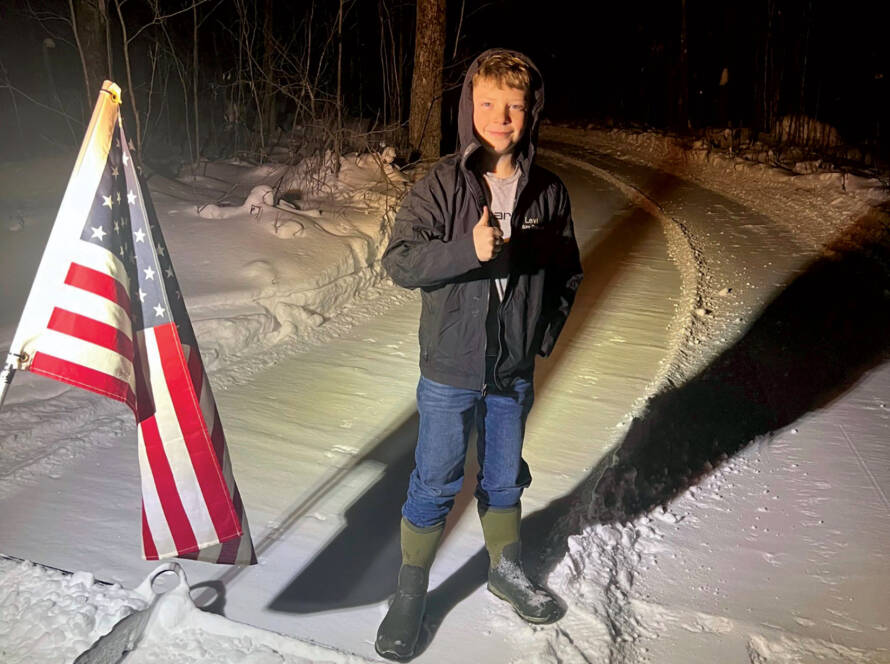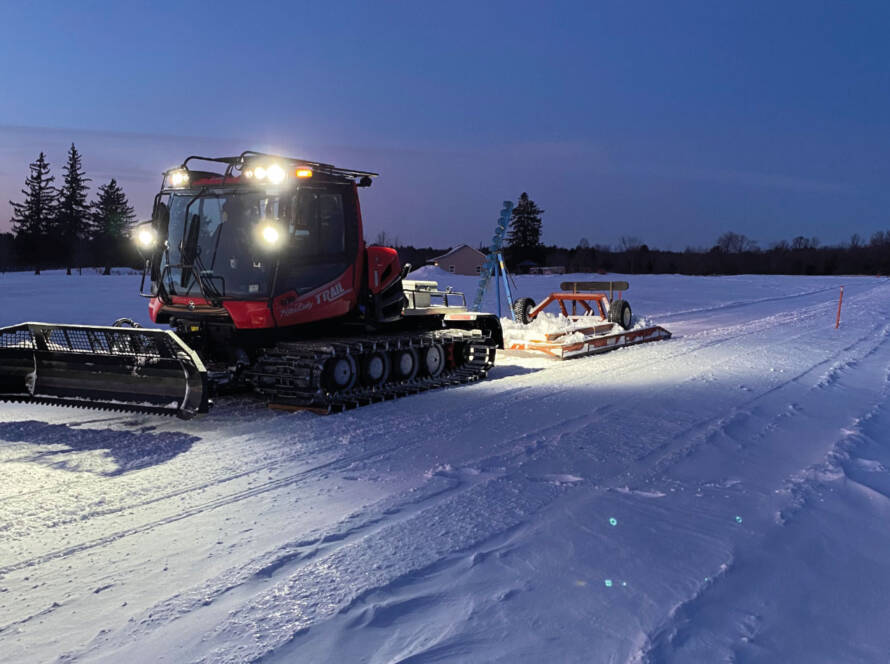A decade ago, the International Snowmobile Manufacturers Association (ISMA) recognized a need to get more people involved in the sport of snowmobiling.
The start-up costs for the hobby can be quite a large investment, deterring many. The solution? Plan a ride that takes those who may have never experienced snowmobiling before and show them how to safely and properly do it.
Now celebrating its 10th anniversary, the annual Take a Friend Snowmobiling campaign has spread across North America and is a great opportunity for clubs to not only introduce non-snowmobilers, but also secure government funding for trail grooming/equipment and increase goodwill for the industry.
“The Take a Friend Snowmobiling Week takes places February 9-18,” said Ed Klim, president of International Snowmobile Manufacturers Association, which is headquartered on Haslett, Mich. “You can put special emphasis on your planned rides during this special week, which will be supported by special media contracts from ISMA and its partners.”
Klim adds that research shows people want to go snowmobiling, but just don’t know how to get started.
“By planning a ride, we take the guesswork out of it for those that might not try it any other way. Buying a snowmobile is a great investment so if we can show people how to get started properly, they might be more inclined to join us in our clubs, associations and on trails or in the mountains and open riding area.”
Campaign benefits
ISMA represents the four snowmobile manufacturers – Arctic Cat, Ski-Doo, Polaris and Yamaha – and coordinates committees within the industry to handle concerns such as snowmobile safety, the promotion of the lifestyle activity of snowmobiling, keeping accurate statistics, reporting the growth of the industry and the positive economic impact of snowmobiling throughout the world.
The Take a Friend Snowmobiling campaign was created to support all snowmobile associations of the American Council of Snowmobile Associations and Canadian Council of Snowmobile Organizations and their clubs to enhance and expand their partnership with local chambers of commerce, visitor and convention bureaus, snowmobile dealers and other businesses related to the snowmobiling community.
“The benefits for your state association could mean such things as more trail signs, groomers and enhancements for trails in your state, with the biggest benefit of all – introducing your non-snowmobiling friends to your favorite winter activity,” said Klim.
All clubs are encouraged to participate in the campaign and partner with local media, radio stations and television stations.
“For instance, club riders can hold an event and have members invite friends on a short ride in a great area and then have lunch, coffee or rolls afterwards,” said Klim. “The campaign is proving to be a big benefit for the snow industry as a whole as more snowmobiles – new and used – can be sold. More non-snowmobilers are being introduced to the activity, and club and association membership increases.”
The target demographic for the campaign is essentially government departments, local businesses and non-riders. So far, the feedback about the campaign has been very positive.
“There are great reports of non-snowmobilers who didn’t know how to get started in snowmobiling, getting a taste of snowmobiling and finding out how much fun it is while making new friends and strengthening friendships with the people who invited them,” said Klim.
Spreading the word
While the benefits of the Take a Friend Snowmobiling campaign are obvious, how do you actually get started in spreading the word about how fun snowmobiling can be?
First, Klim says, each club should assemble committees to work on the campaign.
“One person cannot do all the work, but if the duties are divided among a committee, it makes everyone’s load lighter and goals easier to accomplish. Are there other organizations in your community whom you can involve in this effort? Combine forces whenever possible.”
The duties can be divided as follows:
- Committee chair coordinator. Make assignments, oversee activities and find other community organizations to participate.
- Publicity coordinator. Disperse information, distribute posters, news releases and advertising information.
- Activities coordinator. This position may require several individuals to fulfil the duties. The coordinator and team develop activities and events.
- Spokesperson. Choose a person who likes to talk and knows what they are talking about. This individual could visit various organizations in the community (schools, emergency services and service clubs) to speak on snowmobiling.
- Sponsor coordinator. This person will contact various sources for sponsorship of projects that will need funding, manpower, etc.
- Partnership coordinator. This individual makes the calls to gather partners to support the ride in any way at all.
Klim says it is important for the committee chairman to stay on top of campaign efforts at all times. For instance, the chairman needs to keep detailed lists of who is in charge of what duty, and specifically what they are doing, and the deadlines involved for accomplishing each step. “Make sure all committee members get their assignments in writing. Avoid duplication of efforts.”
It is also vital to follow up regularly with committee members with assignments to ensure they are on track and meeting pre-determined deadlines.
“Be prepared to provide assistance or redelegate work if it is not progressing as necessary,” he said. “If things are not going as planned, reassess your campaign. It’s always best to do a few really good events rather than mediocre or poor events.”
Outreach to the community is vital in helping to make your event a success. This can be accomplished through news releases that are sent out several weeks prior to the activities you are planning.
“Establish contacts with local media whom you can call on to cover your activities,” said Klim. “If no one can attend, then write your own story, take black and white photos and submit them as soon as possible for publication. Use your website and Facebook page to promote your events and invite your local visitors’ bureaus and chambers of commerce to partner with you.”
And most of all, use your leadership skills to their greatest potential.
“Be as polite and diplomatic as possible. You are not the boss. You are working with volunteers. And remember – repetition is important. More than one publicity strategy will be needed to get the message to everyone.”


